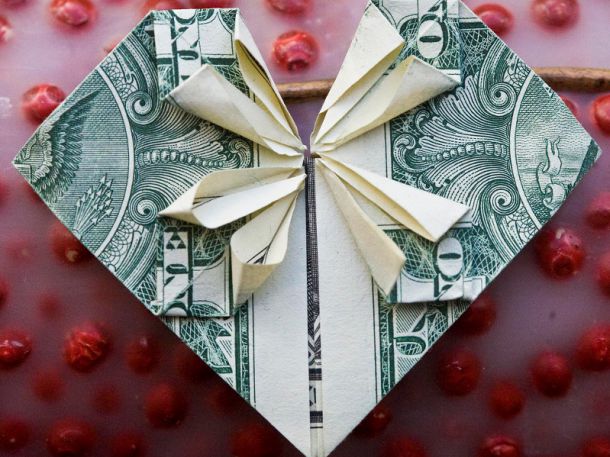
Valentine’s Day is a big day for romance around the globe; this holiday, originally celebrating Christian martyr St. Valentine, has since transformed into a celebration of all things romantic. Valentine’s Day is now a global holiday, currently being the second most celebrated holiday worldwide after New Year’s Day.In the United States Valentine’s Day means a big day for the country’s economy and a number of industries. Spending money on jewelry, restaurants, cards, and flowers might put hearts in the eyes of romantics, but it puts dollar signs in the eyes of business owners as they cash in on one of the most consumer-driven holidays of the year.To put it simply, being romantic is expensive. Valentine’s Day is a multi-billion dollar industry in the United States. The statistics put the holiday among the most important holidays to the American economy, posting spending numbers ranked with Christmas and Halloween as one of the most expensive holidays of the year.In 2013, consumers were expected to spend more than $130 on average, per person, on gifts alone. This is not including dinner dates, drinks, or expenses related to travel. This is an increase from an average of $126 last Valentine’s Day. With each person nationwide contributing to Valentine’s Day spending, the total bill for this romantic day totals a staggering $18.6 billion.
Big winners on Valentine’s Day
Like any holiday, there are a number of traditions related to Valentine’s Day. Heart-shaped anythings and chocolate dipped everythings will show up on store shelves, but some industries are going to benefit more from the holiday than others.Some of the biggest winners on Valentine’s Day are, not surprisingly, restaurants, florists and the candy industry. RestaurantsValentine’s Day is the biggest day for dining out during the year second only to Mother’s Day, trumping popular nights out such as New Years. Restaurants all over New York City will be offering prix fixe menus, specials, and entertainment for the special night, and if you don’t already have reservations – good luck finding one!
RestaurantsValentine’s Day is the biggest day for dining out during the year second only to Mother’s Day, trumping popular nights out such as New Years. Restaurants all over New York City will be offering prix fixe menus, specials, and entertainment for the special night, and if you don’t already have reservations – good luck finding one!
 Candy CompaniesCandy makers are busy months in advance preparing decorated Valentine’s themed packages, pink colored candies, and boxes of chocolate bundled with everything from stuffed animals to artificial flowers, offering customers the full Valentine’s Day package. Candy makers of all sizes go through all this trouble for a good reason; a majority – 51% – of gift givers will be purchasing some sort of candy for their Valentine, totaling an expected $1.6 billion.
Candy CompaniesCandy makers are busy months in advance preparing decorated Valentine’s themed packages, pink colored candies, and boxes of chocolate bundled with everything from stuffed animals to artificial flowers, offering customers the full Valentine’s Day package. Candy makers of all sizes go through all this trouble for a good reason; a majority – 51% – of gift givers will be purchasing some sort of candy for their Valentine, totaling an expected $1.6 billion.
 FloristsStats show that one-third of those giving gifts will include flowers in their Valentine’s Day present. Florists are sure to be working overtime to ensure they have their share of the $1.9 billion in sales for the flower industry. They’re busy not only making certain their inventory is at its highest to keep up with demand, but also ensuring that their distribution system goes far beyond the storefront. Many partner with online retailers such as 1800flowers.com to broaden their customer base and do everything they need to ensure that they are involved in the 190 million roses shipped nationally for Valentine’s Day.
FloristsStats show that one-third of those giving gifts will include flowers in their Valentine’s Day present. Florists are sure to be working overtime to ensure they have their share of the $1.9 billion in sales for the flower industry. They’re busy not only making certain their inventory is at its highest to keep up with demand, but also ensuring that their distribution system goes far beyond the storefront. Many partner with online retailers such as 1800flowers.com to broaden their customer base and do everything they need to ensure that they are involved in the 190 million roses shipped nationally for Valentine’s Day.
 Jewelry CompaniesJewelry will be included by nearly 20% of those giving gifts, accounting for $4.4 billion of Valentine’s Day spending – or almost 25% all money spent on Valentine’s Day gifts. Valentine’s Day is also a big day for marriage proposals, and retailers do great business on engagement rings during this time of year.
Jewelry CompaniesJewelry will be included by nearly 20% of those giving gifts, accounting for $4.4 billion of Valentine’s Day spending – or almost 25% all money spent on Valentine’s Day gifts. Valentine’s Day is also a big day for marriage proposals, and retailers do great business on engagement rings during this time of year. Card CompaniesAnother surprise? None of these industries are as big a winner on Valentine’s Day as the greeting card industry. Second only to Christmas, there are more cards given on Valentine’s Day than any other day in the year. Greeting cards amount for 60% of Valentine’s Day spending with large card makers such as Hallmark offering as many as 2,000 variations of Valentine’s Day cards. More than a billion cards are sent worldwide – just imagine nearly $10 billion in paper. On a cute note, the top recipients of Valentine’s day cards are teachers and children.What else are people buying?While the big winners are listed above, some Valentine’s Day shoppers are going off the beaten path.Some gift givers are buying items that are a little less traditional. Clothing will be purchased by 15% of those giving gifts, with another 15% giving gift cards. These two categories together will account for nearly $3.5 billion of Valentine’s Day spending.Looking for something a bit more bizarre? $815 million is spent on gifts for pets, with more than 9 million consumers buying gifts for their beloved animal friends.Perhaps not surprisingly, men are the big spenders on Valentine’s Day. Men in the US are likely to spend more than $160 on Valentine’s Day gifts, while women’s purchases are a comparably low $85. Women are also more likely to be purchasing Valentine’s gifts for children, friends, or other family members – including the sizable amount of sales that comes from children’s greeting cards for friends and classmates. In the face of this statistic, greeting card companies have focused on creating goods catered specifically to children and families in order to increase the spending of women.No matter who is spending more or in which industries, the holiday continues to prove popular – and lucrative – both in the United States and around the world. From prix fixe meal deals to heart-shaped packaging, industries are on call to ensure you open your heart, and your wallet.
Card CompaniesAnother surprise? None of these industries are as big a winner on Valentine’s Day as the greeting card industry. Second only to Christmas, there are more cards given on Valentine’s Day than any other day in the year. Greeting cards amount for 60% of Valentine’s Day spending with large card makers such as Hallmark offering as many as 2,000 variations of Valentine’s Day cards. More than a billion cards are sent worldwide – just imagine nearly $10 billion in paper. On a cute note, the top recipients of Valentine’s day cards are teachers and children.What else are people buying?While the big winners are listed above, some Valentine’s Day shoppers are going off the beaten path.Some gift givers are buying items that are a little less traditional. Clothing will be purchased by 15% of those giving gifts, with another 15% giving gift cards. These two categories together will account for nearly $3.5 billion of Valentine’s Day spending.Looking for something a bit more bizarre? $815 million is spent on gifts for pets, with more than 9 million consumers buying gifts for their beloved animal friends.Perhaps not surprisingly, men are the big spenders on Valentine’s Day. Men in the US are likely to spend more than $160 on Valentine’s Day gifts, while women’s purchases are a comparably low $85. Women are also more likely to be purchasing Valentine’s gifts for children, friends, or other family members – including the sizable amount of sales that comes from children’s greeting cards for friends and classmates. In the face of this statistic, greeting card companies have focused on creating goods catered specifically to children and families in order to increase the spending of women.No matter who is spending more or in which industries, the holiday continues to prove popular – and lucrative – both in the United States and around the world. From prix fixe meal deals to heart-shaped packaging, industries are on call to ensure you open your heart, and your wallet.

